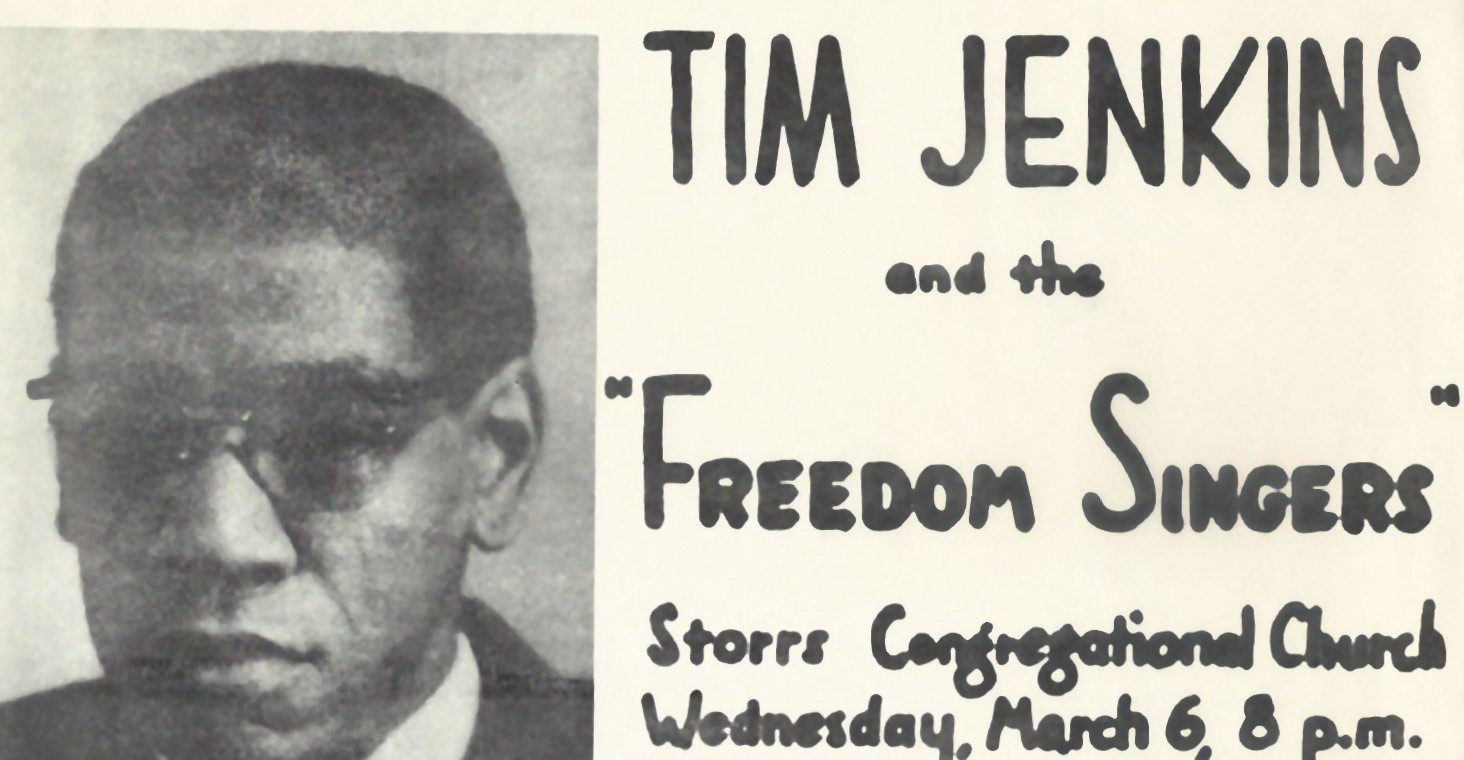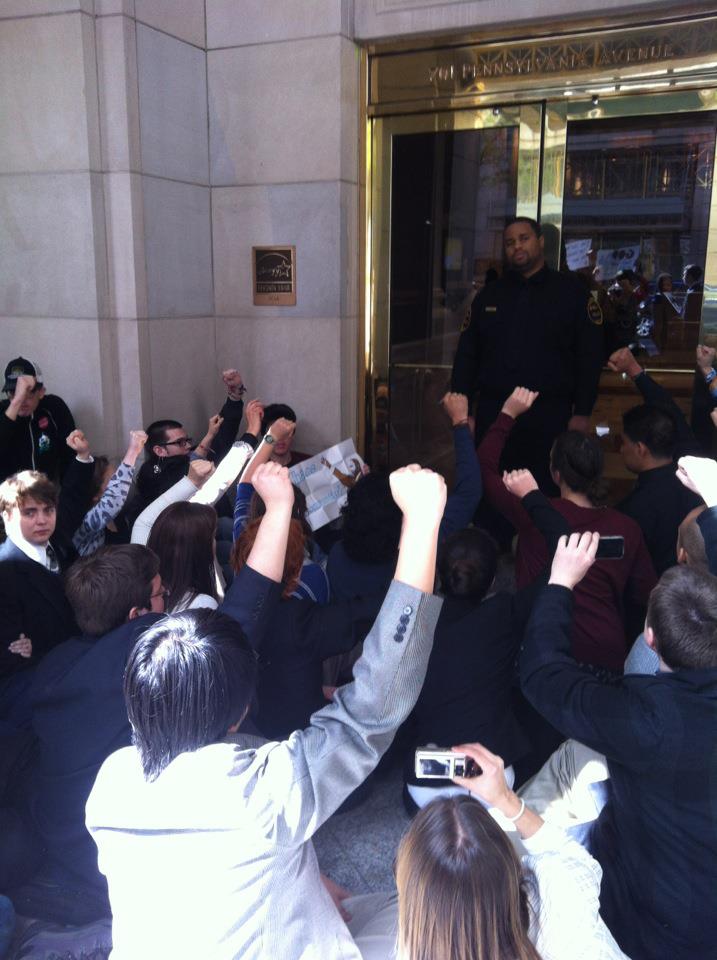How We’re Rebuilding the Nation’s Largest Student Organization

Where We Were
For decades, the United States Student Association (USSA) served as the nation’s most powerful student voice. Born in 1978 from the merger of the National Student Association (NSA) and the National Student Lobby (NSL), the USSA was a force for equity and justice in higher education and led many movements to make higher education more affordable, accessible, and inclusive.
The NSA's roots trace back to the 1946 Prague Convention, where students from 36 nations—including the U.S.—gathered to form the International Union of Students. This global solidarity inspired the NSA’s founding at the University of Wisconsin the following year, where it famously adopted the Student Bill of Rights. The NSA's history wasn’t without controversy; it faced significant financial challenges in the 1950s and was covertly funded by the CIA (unbeknownst to the vast majority of its membership and leaders) until the partnership dissolved in 1967. This period pushed the organization to refocus its efforts on domestic issues, such as racial inequality and opposition to the Vietnam War.

Tim Jenkins, an early Vice President of NSA, was also a founder of the Student Nonviolent Coordinating Committee. Credit: SNCC Legacy Project
In 1971, a group of Californians broke off from the NSA to form the National Student Lobby (NSL) as they wanted to focus on more legislative priorities. The NSL lobbied for increased funding for the Higher Education Act of 1972, best known for its creation of Title IX which prohibited discrimination on the basis of sex in institutions receiving federal funding. They also lobbied to increase minimum wage and for the abolition of the Vietnam War draft. Similarly, the NSA opposed the war and, controversially, their president visited North Vietnam in hopes of finding evidence of the U.S. violating international law. This infamously made the NSA a member of President Nixon’s enemy list, a culmination of his political opponents and enemies.
After this, the NSA became more focused on lobbying and legislation and collaborated with the NSL a few years later, thus forming the United States Student Association as an advocacy coalition of hundreds of thousands of students across the country. The USSA was an integral part in advocating against tuition increases and for allowing students to be eligible for credit cards.
For years, the USSA was the largest student-run, student-led organization in the entire country. The USSA ran for nearly 39 years until its collapse in 2016 when it finally succumbed to the structural and financial hardships it had been facing for the better part of a decade. This fate was not unique to the USSA. Many statewide student associations and other student-led advocacy groups faced similar challenges that drastically reduced their operations or led to their collapse altogether. This has been seen in states such as Wisconsin, New Jersey, and Arizona where the ability to fund statewide student associations using student fees has been severely diminished or completely abolished.

USSA occupied the entrance of a student loan servicer, demanding debt forgiveness in 2012. Credit: Chris Hicks
Although the USSA collapsed in 2016, the organization’s legacy endures through the student leaders it empowered, many of whom continue to champion equity and justice across a wide range of fields. It's some of these very same student leaders who have been invaluable in the current efforts to reform and revive the United States Student Association.
Where We Are
In April of 2024, a group of student leaders and alumni met in Washington D.C. to discuss the return of the USSA. This initial convening featured representatives from four of the strongest statewide student associations in the country, the Washington Student Association (WSA), the Oregon Student Association (OSA), the University of California Student Association (UCSA), and the Arizona Student Association (ASA).
This initial convening was the first instance of student leaders coming together to amplify the student voice at the national level since the collapse of the USSA. Following this convening, these leaders among others have been holding biweekly student leadership calls in order to bring back the USSA.
Student leaders from Washington, Oregon, California, Arizona, New York, Florida, North Carolina, Massachusetts, and Minnesota met frequently throughout the summer to discuss the revival of the USSA, learn from each others efforts in their respective states, and learn more about federal advocacy and student leadership from USSA alumni who are now leaders in their respective fields. These calls were and continue to be open to students nationwide irrespective of their leadership role on their campus. Our only requirement is that they must be a currently enrolled student in order to be involved with this work.
One notable example of the revival effort’s momentum was an alumni panel hosted during one of these calls, where former USSA leaders shared their insights on advocacy, leadership, and the importance of student mobilization. The panel, which included alumni who held previous leadership roles within the USSA and their respective statewide student associations, provided their perspectives and thoughts on navigating the challenges students face and the strategies that have worked in the past. These alumni emphasized the significance of collective action and the power of students uniting around common goals, offering advice on how current student leaders can organize effectively at both the state and federal levels.
On September 30th 2024, these student leaders voted on a formal plan to officially revive the association entitled Project Restart. This plan, spanning from September of 2024 to May of 2025, marks the steps that students are going to take to finally bring back the USSA. The plan includes building a national student network, training student leaders in advocacy, and culminates in hosting a national convening and student lobby day in Washington, D.C., in spring of 2025, where students will officially vote to reestablish the association by adopting new governing documents and electing new leadership.
As part of Project Restart, the USSA has formed three committees—Policy, Outreach, and Operations—which are charged with specific duties in preparation for the spring convening. These committees are actively seeking additional members and will hold regular meetings over the next several months. This structure ensures that the revival effort remains collaborative, transparent, and action-oriented.

Former USSA President Tiffany Dena Loftin working with current students in D.C.
This effort to revive the USSA, comes at a time when many of these student leaders have recognized that it has likely never been more difficult to be a student. The rising cost of education is only the beginning of the struggle—students are increasingly burdened with skyrocketing tuition, mounting student loan debt, a lack of affordable housing, and access to basic needs. The pressure to succeed academically, while managing these crises, is overwhelming. These issues affect not only the well-being of students but also their ability to succeed in higher education at all.
But it’s not just the external pressures students face that are concerning, it’s also the deliberate erosion of their power to act collectively. Over the past decade or so, student leaders have witnessed an increasing trend of their influence being stripped away, both on campuses and within legislative arenas. From state-level budget cuts that weaken student governance structures to other policies designed to silence dissent and marginalize student voices, it’s clear that there is a concerted effort to suppress student movements. In Washington State, for instance, a broadly written law (RCW 28B.10.281) threatens to revoke financial aid for students who participate in demonstrations that disrupt the educational process at an institution. While there is no record of this law being enforced, it’s especially concerning given recent efforts from pro-Palestinian organizers who have seen their efforts be targeted by university administration, local authorities, and elected officials across the country. The mere existence of a policy such as this one disproportionately impacts low-income and first-generation students, who depend greatly on financial aid and may feel forced to choose between exercising their right to protest and preserving their ability to afford an education.
Across the country, student governments have been targeted with restrictions on their power to advocate for essential services, access to resources, and policy changes that benefit students. In some cases, student groups are being defunded or denied the ability to hold events that are critical for raising awareness and driving change. Legislative attacks on student advocacy groups and higher education funding reflect a broader trend aimed at stifling student-led movements that have historically pushed for systemic reforms and greater equity in education. These efforts are not only an affront to student voices, they are a direct attempt to dismantle the very foundation of student-led advocacy.
At a time when student activism is needed more than ever, the forces that seek to suppress student power only make the work of student leaders that much harder. As mentioned earlier, one of the groups present at the initial convening to discuss the revival of the USSA was the Oregon Student Association (OSA). Tragically, despite its long-standing history of advocacy and wins for students in Oregon, the OSA was forced to shut down in 2024. The organization faced mounting financial pressures and structural challenges that made its continuation unsustainable.
The death of the OSA is a sobering reminder of how fragile student-led organizations can be, even when they have a proven track record of success. It underscores the urgency of reviving a national student-led body that can advocate for policies protecting student organizations and empowering them to fight back against the forces working to suppress their voices. Without such a unified effort, the void left by organizations like the OSA will only grow, leaving students more vulnerable to systemic inequities and silencing.
The revival of the USSA is a response to this intentional marginalization and recent history of organizational decline, a reclaiming of the space that students have historically occupied as advocates for themselves and their peers. The challenges we face are immense, but so is the power we have when we stand united. Now, more than ever, it is critical that we restore the USSA to ensure that students once again have a powerful, coordinated voice in the fight for equity, justice, and a higher education system that serves all.
Where We’re Headed
What began as a conversation among a few student leaders in an NEA conference room has now grown into a national movement. Today, the revival of the USSA involves leaders from ten states and hundreds of campuses across America, collectively representing over four million students.
This effort is grounded in a fundamental truth about organizing and advocacy: those directly impacted by systemic issues must lead the fight for change. Students, as the primary stakeholders in higher education, are uniquely positioned to champion policies that address their needs. Whether it’s fighting for affordable tuition, expanding access to financial aid, or addressing systemic inequities, the lived experiences of these students are critical in shaping effective solutions.
The USSA’s revival is not just about rebuilding an organization, it’s about reigniting a movement. The challenges facing students today, from rising tuition costs to a mental health crisis, demand bold, collective action. By uniting students across the country, the USSA aims to restore higher education as a public good and a pathway to opportunity for all.
As the USSA prepares for its formal relaunch in spring 2025, it invites all students to join this historic effort. The association’s vision is clear: a unified, student-led movement that amplifies the voices of millions and transforms higher education for the better.
The USSA’s legacy reminds us of what is possible when students organize and act collectively. Its revival shows that, even after years of dormancy, the spirit of student advocacy remains alive and well. Now more than ever, students must come together, share their stories, and lead the charge for a brighter future.
Sean Behl is a student leader who currently attends the University of Washington. He is the Vice President of Community and Technical College Student Affairs at the Washington Student Association, the Director of Legislative Affairs at the Associated Students of the University of Washington and was recently elected to serve as the Chair of the United States Student Association Operations Committee.
The mission of The Forge is to elevate the strategy and practice of organizing through the sharing of ideas, methods, history, and inspiration, and by building connection and community among organizers and between sectors of the progressive movement.
The Forge is made possible through the support of our community. By becoming a subscriber, you’re fueling the Forge community — helping to strengthen our movement by providing a forum for organizers to sharpen our strategies, exchange tactical innovations, and build the power we need to win. To subscribe, click here. To learn more about our current subscribers, click here.
The Forge is a publication; the views expressed in the pieces we publish do not necessarily reflect the views or opinions of the journal, and the presence of an article on the site does not constitute an endorsement by The Forge. Articles have been published and made available for educational purposes, to foster dialogue, and to strengthen organizing work in real time.
